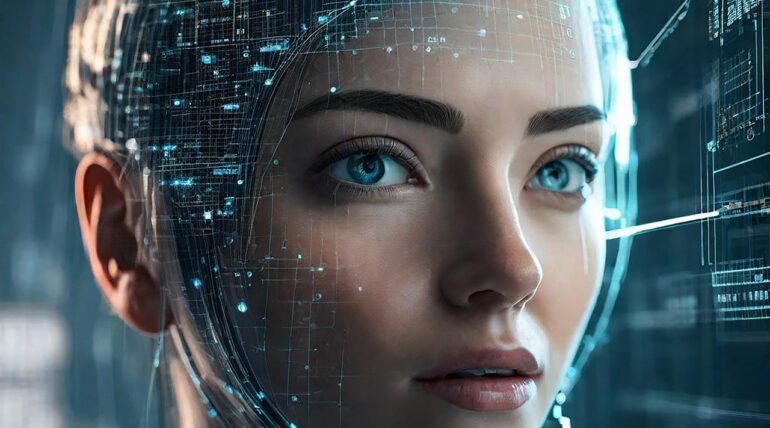
**AI and Innovation Concept**
Artificial Intelligence (AI) plays a pivotal role in driving innovation across various sectors by enabling new possibilities, improving efficiencies, and creating new products and services. At its core, AI is about building machines or systems that can perform tasks that typically require human intelligence. These include learning, reasoning, problem-solving, language understanding, and perception. Here’s how AI and innovation intersect:
1. **Automation and Efficiency**
AI enables automation, making processes faster, more accurate, and cost-effective. This leads to:
– **Optimized Workflows:** AI automates repetitive tasks, freeing up human workers to focus on higher-level problem-solving.
– **Improved Decision-Making:** AI systems can process vast amounts of data quickly and provide insights that help in decision-making.
– **Cost Reduction:** With AI-driven automation, businesses can reduce operational costs.
2. **Personalization and Customer Experience**
AI can help create highly personalized experiences for users:
– **Recommendation Systems:** Platforms like Netflix, Amazon, and Spotify use AI to recommend content based on user preferences.
– **Chatbots and Virtual Assistants:** AI-driven chatbots enhance customer support, providing instant answers and solutions.
– **Adaptive Learning Systems:** In education, AI can personalize learning experiences by adapting to the student’s pace and learning style.
3. **New Products and Services**
AI fosters the development of entirely new types of products and services that were once unimaginable:
– **Healthcare Innovation:** AI assists in diagnosing diseases, personalized medicine, and drug discovery.
– **Autonomous Vehicles:** Self-driving cars and drones are transforming transportation, logistics, and delivery systems.
– **Smart Cities:** AI helps manage resources, improve traffic flow, reduce energy consumption, and enhance public safety.
4. **Data-Driven Innovation**
AI relies heavily on data, and through advanced analytics, it extracts valuable insights that lead to innovation:
– **Predictive Analytics:** AI can forecast trends, enabling businesses to act proactively.
– **Data Mining:** AI uncovers hidden patterns in large datasets that can drive innovation in product development, marketing, and more.
**Human-AI Collaboration**
Rather than replacing humans, AI enhances human capabilities:
– **Augmented Intelligence:** AI systems work alongside humans to increase productivity and enhance decision-making.
– **Creative AI:** In art, music, and writing, AI is being used as a tool to assist in creative processes, offering new perspectives and ideas.
6. **Challenges and Ethical Considerations**
While AI drives innovation, it also raises ethical and societal challenges:
– **Job Displacement:** Automation might replace some jobs, but it could also create new opportunities for innovation and entrepreneurship.
– **Bias and Fairness:** AI systems must be designed to avoid reinforcing biases and to ensure fairness.
– **Privacy Concerns:** The collection and analysis of personal data raise concerns about data security and privacy.
Conclusion
AI is an essential catalyst for innovation, reshaping industries and creating new opportunities. Its ability to automate, personalize, and generate insights from data accelerates growth and creativity in ways that were previously unattainable.








